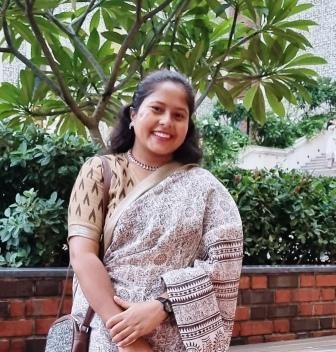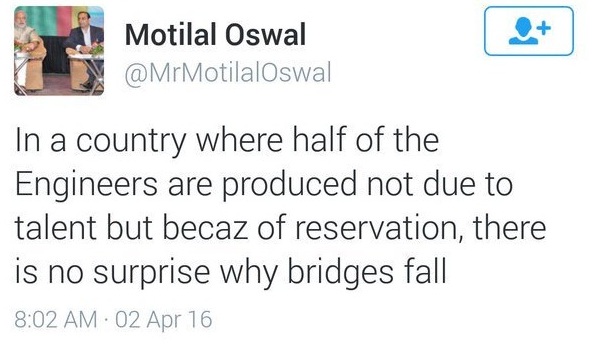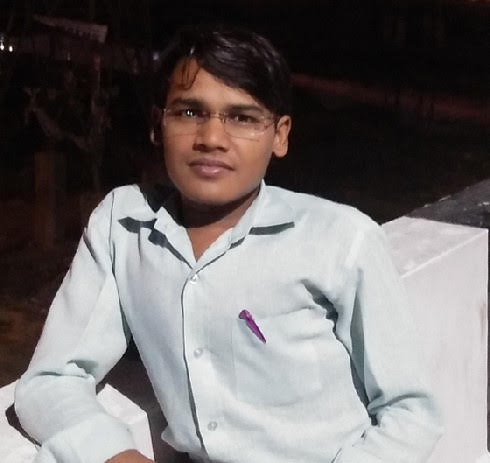Jyoti Markam
In the ever-evolving narrative of human progress, where the pursuit of sustenance, clothing, and shelter has been a constant, certain indigenous communities face a distinctive challenge that transcends these fundamental needs. Their struggle revolves around safeguarding their cultural heritage, including their languages, as well as stewardship of their precious forests and lands. The inexorable march toward cultural oblivion is a looming threat that these communities confront in an era characterized by globalization and the relentless sway of market forces.
At the heart of this challenge is the preservation of indigenous languages, which serve as the cornerstone of these communities’ identities. The fading away of a language is not merely the loss of words; it entails the forfeiture of centuries-old customs, culinary traditions, oral narratives, proverbs, age-old practices, festivals, and even the very essence of a community’s identity. This loss extends to indigenous handicrafts and folk customs, woven intricately into the fabric of their lives.
Indigenous languages are more than just a means of communication; they are repositories of history, wisdom, and cultural richness. When a language disappears, it takes with it a wealth of knowledge and heritage. It erases the stories passed down through generations, the unique ways of understanding the natural world, and the wisdom inherent in traditional practices.
The threat to these languages is multifaceted. Globalization, with its homogenizing effects, often marginalized indigenous cultures. Market forces encroach upon ancestral lands, leading to displacement and the erosion of traditional ways of life. Younger generations are drawn to more widely spoken languages, leaving their native tongues in jeopardy.
Efforts to counter this crisis are underway worldwide. Organizations, both indigenous and non-indigenous, are collaborating to document and revitalize endangered languages. Initiatives focus on educational programs, cultural exchange, and the promotion of multilingualism. Governments are recognizing the importance of indigenous languages and providing support for language revitalization.
Yet, the road ahead remains arduous. Safeguarding cultural heritage and languages requires not only policies and programs but also a deep appreciation for the intrinsic value of diversity. It demands a collective commitment to preserving the world’s linguistic and cultural tapestry, recognizing that the loss of even one indigenous language is a loss for all of humanity.
In this era of rapid change and global interconnectedness, the fate of indigenous languages and cultures stands at a crossroads. The choices made today will determine whether these unique voices and traditions endure for future generations or fade away into oblivion, leaving an irreplaceable void in the mosaic of human civilization.
In our nation, the rapid decline of languages can be attributed to a multitude of complex factors, forming a tapestry of challenges that threaten the rich linguistic tapestry of our indigenous communities. These factors encompass economic progress, the diminishing use of traditional languages in occupational settings, the relentless march of globalization, the marginalization of smaller languages, and a shortfall in transmitting language within tribal domains. As a consequence, individuals are increasingly finding themselves estranged from their own linguistic heritage.
In this age of modernity and mechanization, people are progressively turning away from the cultural legacy and traditions of their native regions, driven by the gradual erosion of their mother tongues. The relentless tide of rapid urbanization and the all-encompassing influence of modernity have led individuals to abandon the use of traditional agricultural implements, utensils, and time-honored household artifacts that were once inseparable from their daily lives.
The introduction of gunpowder in regions like Bastar has triggered a wave of migration, displacement, and ecological despoliation, presenting an existential challenge to the very seeds of Adivasi identity—their languages. On one front, the forces of the market have made their inexorable entry, while on another, the specter of displacement looms large, and on the third, the relentless pressure of modern education takes its toll. As a result, numerous languages have succumbed to the sands of time, others have witnessed their grammatical structures contorted, and some have lost their pristine essence.
This linguistic crisis serves as a stark reminder of the delicate interplay between culture, identity, and progress. The fading echoes of these indigenous languages are not just a matter of linguistic diversity but a reflection of the changing social and economic landscape. Efforts to preserve and revitalize these languages are vital, not only for the communities they belong to but for the broader tapestry of our nation’s cultural heritage.
As we move forward in this era of rapid change, it is imperative that we recognize the importance of linguistic diversity and the integral role languages play in shaping our identities. The preservation of these languages is not just a cultural duty; it is a testament to the resilience and richness of our nation’s heritage. The challenge now is to strike a balance between progress and preservation, ensuring that the voices of these indigenous languages continue to resonate in our nation’s story.
In the heartland of Bastar, contemporary times have seen the presence of a myriad of Adivasis inhabiting colonies established by security forces. These colonies, characterized by mixed populations, present living conditions that do not align with the indigenous way of life. The transformation begins gradually, with dietary preferences shifting, followed by alterations in lifestyle, and eventually, even the indigenous languages undergo metamorphosis. For Adivasis who migrate to urban centers, the adoption of local languages for everyday interactions and communication becomes a norm, leading to changes in their traditional nomenclature and culinary practices.
It is an undeniable truth that learning through one’s mother tongue yields superior results. It not only enhances comprehension but also nurtures creativity. The ability to contemplate, read, and write in one’s own language is a source of personal joy and pride. Furthermore, the connection with one’s cultural heritage, traditions, and, in essence, one’s roots, through their mother tongue, signifies a deep respect and passion for one’s culture and nation.
This highlights the urgent need to safeguard tribal languages and cultures in the face of relentless modernization and globalization. Concerted efforts must be made to conserve and nurture these unique languages and the rich tapestry of cultural diversity they represent.
As indigenous languages evolve or, in some cases, face extinction, the loss extends beyond mere words. It encompasses a vanishing window into centuries of wisdom, traditions, and ways of life. For the Adivasis of Bastar, and indeed for indigenous communities worldwide, the struggle to maintain their linguistic and cultural identity is both a personal and collective journey.
In Bastar, where the interplay of cultures and lifestyles is evident, there lies an opportunity for harmony and preservation. Efforts to bridge the gap between indigenous languages and contemporary communication tools can be instrumental. Promoting bilingualism and multilingualism can help maintain the rich linguistic tapestry while enabling Adivasis to thrive in the modern world.
The path to preserving indigenous languages and cultures is not without its challenges, but it is a vital endeavor. It is a commitment to honoring diversity, preserving history, and ensuring that the voices and traditions of Adivasis in Bastar, and similar communities worldwide, continue to echo through the ages. In this quest, we find the essence of cultural respect and the foundation of a more inclusive and enriched society.
In a commendable move to preserve the cultural heritage of Chhattisgarh’s indigenous communities, the state government has integrated local languages into its primary-level curriculum, with a strong emphasis on region-specific dialects. This forward-looking curriculum includes the prominent Gondi, Halbi, Bhatri, Kudukh, Sargujia, Chhattisgarhi, and even Odia languages.
Recognizing the pivotal role of a mother tongue within any community, the Chhattisgarh government’s initiative is rooted in the belief that a mother tongue is paramount for comprehending a community’s history and preserving its cultural legacy. A mother tongue encapsulates not only linguistic intricacies but also the rich tapestry of oral traditions and cherished customs. Many communities still rely on the oral tradition, passing down stories and songs through generations.
For those intimately connected with their mother tongue, the experience is profoundly enriching. Born in Bastar, Chhattisgarh, these individuals have witnessed firsthand the concept of languages changing every 10 kilometers within India. For instance, the Gondi language, once widely spoken in central India, now teeters on the brink of extinction. The wave of modernization and the dominance of mainstream languages like Hindi and Chhattisgarhi in the region have played significant roles in the fading of Gondi. Regional politics in Chhattisgarh have also contributed to the suppression of indigenous languages, further emphasizing the prominence of Hindi and Chhattisgarhi.
This linguistic shift has been notably observed as individuals from Bastar venture to other cities for education. Their distinctive Bastar accent often draws attention, leading to perceptions that they may not be proficient in Hindi. Consequently, rather than nurturing their mother tongue, Gondi, many divert their efforts toward mastering Hindi.
Bastar, once a haven for diverse tribes, exhibited linguistic diversity that mirrored its cultural richness. However, today, only a handful of languages like Gondi, Halbi, and Bhatri continue to endure. Gondi and Halbi, although facing challenges, show resilience, while other languages in Bastar, like Dhurvaa, Parji, and Maadi, spoken in different parts of the region, teeter on the brink of vanishing.
To summarize, Halbi and Bhatri are the predominant languages in Bastar’s urban areas, while Gondi, Halbi, and Bhatri grapple with survival in remote tribal regions. The language predicament in Bastar traces its origins to the onset of modernization, and conflicts between indigenous populations and entrepreneurs over resource exploitation have further complicated the linguistic landscape. While outsiders settling in Bastar for centuries embraced local languages to market the region’s natural resources, globalization-driven resource exploitation has brought language to the forefront as a significant point of contention.
In this delicate dance between preserving linguistic diversity and accommodating modernization, Chhattisgarh’s efforts to include local languages in its curriculum are a promising step forward. These initiatives strive to strike a balance between cultural preservation and progress, ensuring that the voices of indigenous communities in Bastar continue to be heard and celebrated in the evolving narrative of India’s linguistic heritage.
In the midst of episodes of violence and retaliation, the mass exodus of Bastar’s inhabitants has taken a toll on their native languages, leading to their weakening and eventual fading away. The extinction of a language is not just the loss of words but entails the forfeiture of age-old traditions, culinary treasures, narratives, and a way of life. Bastar, a region where people from diverse linguistic backgrounds coexist, boasts Dravidian family languages, Aryan languages, and even Mundari. The linguistic diversity is so vast that someone speaking Gondi in one region might struggle to comprehend Gondi spoken elsewhere. For many, Gondi was imbibed naturally, having grown up in an environment where it was spoken. However, the pursuit of quality education has led to a distancing of their children from their mother tongue. Traveling from Bastar to other parts of Chhattisgarh often invites disdain due to their Bastaria accent, with people mocking them for not speaking Hindi correctly. This gradual supplanting of external languages is leading to the erosion of their mother tongue.
In a commendable endeavor, the Chhattisgarh government has embarked on a mission to preserve and promote the diverse indigenous cultures that flourish in the region of Bastar. This noble initiative takes shape through the establishment of the Bastar Academy of Dance, Art, and Language, affectionately known as BADAL Academy.
The central objective of BADAL Academy is to breathe new life into Bastar’s unique culture, which serves as the very essence of the indigenous communities inhabiting this region. Bastar is renowned for its vibrant folk dances, rich local dialects, literary heritage, and traditional arts. Yet, over time, these cultural treasures have faced the risk of fading into oblivion.
BADAL Academy emerges as a beacon of hope in this cultural renaissance. It stands as a centralized institution for the conservation and promotion of the indigenous cultures in Bastar. Among its primary missions is the meticulous documentation of traditions, customs, folk songs, folk dances, and the myriad of indigenous languages that make Bastar an exceptional cultural landscape.
The academy’s aim is not merely preservation but the passing down of these invaluable cultural elements to future generations. In doing so, it seeks to bridge the gap between the past and the present, allowing Bastar’s rich heritage to flourish in the modern era.
By nurturing the roots of Bastar’s culture and providing a platform for its continued evolution, BADAL Academy plays a pivotal role in celebrating and safeguarding the essence of the indigenous communities of Chhattisgarh. This initiative underscores the government’s commitment to recognizing, respecting, and nurturing the unique cultural diversity that thrives in the heart of Bastar. It represents a significant stride towards preserving a tapestry of traditions that defines the soul of this remarkable region.
~~~
Jyoti Markam is an independent journalist and writer from the Muria tribe in Bastar, Chhattisgarh, focusing on indigenous rights, women’s empowerment, and environmental issues. Currently, I’m pursuing a Post-Graduation Diploma in Liberal Arts at Ashoka University.










